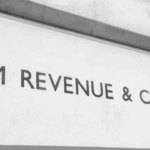A new study has revealed that 70% of individuals from lower socioeconomic backgrounds face significant barriers that impact their access to opportunities, with younger generations being particularly affected. The research, conducted by Co-op and Demos, underscores the ongoing struggles many face in achieving social mobility, a challenge exacerbated by social stigma and financial obstacles.
The study found that over a quarter (27%) of those surveyed feel pressured to hide or downplay their background during job interviews or in the workplace, illustrating the persistent social stigma surrounding socioeconomic status. Among 16-34 year-olds, this figure rises dramatically to 82%, with 39% admitting they have concealed their background. These findings mirror data from the Social Mobility Commission’s latest report, which reveals that the disadvantage gap index at age 16 is at its highest level since 2011-12.
The Co-op and Demos research also highlights the significant economic impact of improving social mobility. The study estimates that addressing the barriers to opportunity could add £200 billion to the UK’s GDP over the next decade. In light of these findings, Co-op is calling on the UK Government and businesses to take decisive action to remove the obstacles hindering social mobility.
The study identified several key barriers that individuals from disadvantaged backgrounds face when trying to progress, including:
- Lack of financial support for further education (21%)
- Low confidence or sense of belonging in certain work environments (19%)
- High cost of relocating for better opportunities (17%)
- Inaccessible unpaid internships or work experience (14%)
- Growing up in regions with fewer opportunities (13%)
- Limited access to career advice or mentorship (10%)
- Restricted professional networks or contacts (9%)
- High cost of appropriate interview/work attire (9%)
- Lack of relatable experiences with colleagues (6%)
- Bias in recruitment based on socioeconomic background (6%)
One young person, Ishitha Islam, a 21-year-old from London, shared her personal experience as a first-generation professional. “I still feel like I don’t fit in at prestigious organisations because there is no one like me reflected in the higher ranks,” she said. “Businesses need to realise that social mobility benefits everyone, bringing creative ideas and broader representation.”
Claire Costello, Co-op’s Chief People and Inclusion Officer, called the findings a “wake-up call” and emphasized the economic value of promoting social mobility. “Millions are being held back from reaching their potential due to their background. Promoting social mobility is not just morally right, but an economic opportunity.”
As part of its ‘Backgrounds into the Foreground’ campaign, Co-op is urging the Government to fast-track plans to make socioeconomic background a protected characteristic under the 2010 Equality Act, ensuring protections against discrimination in the workplace and education.
This study builds on findings from the Social Mobility Commission’s 2024 report, which shows that young people from higher professional backgrounds are more than twice as likely to pursue higher education and over four times as likely to secure high-level professional roles compared to their lower-income peers. Co-op’s campaign highlights the urgent need for policy changes and a collective effort from businesses to create an inclusive environment that offers equal opportunities for all.









